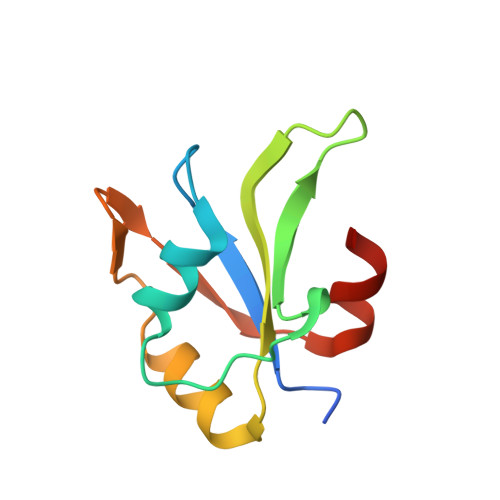The Drosophila hnRNP F/H Homolog Glorund Uses Two Distinct RNA-Binding Modes to Diversify Target Recognition.
Tamayo, J.V., Teramoto, T., Chatterjee, S., Hall, T.M., Gavis, E.R.(2017) Cell Rep 19: 150-161
- PubMed: 28380354
- DOI: https://doi.org/10.1016/j.celrep.2017.03.022
- Primary Citation of Related Structures:
5UZG, 5UZM, 5UZN - PubMed Abstract:
The Drosophila hnRNP F/H homolog, Glorund (Glo), regulates nanos mRNA translation by interacting with a structured UA-rich motif in the nanos 3' untranslated region. Glo regulates additional RNAs, however, and mammalian homologs bind G-tract sequences to regulate alternative splicing, suggesting that Glo also recognizes G-tract RNA. To gain insight into how Glo recognizes both structured UA-rich and G-tract RNAs, we used mutational analysis guided by crystal structures of Glo's RNA-binding domains and identified two discrete RNA-binding surfaces that allow Glo to recognize both RNA motifs. By engineering Glo variants that favor a single RNA-binding mode, we show that a subset of Glo's functions in vivo is mediated solely by the G-tract binding mode, whereas regulation of nanos requires both recognition modes. Our findings suggest a molecular mechanism for the evolution of dual RNA motif recognition in Glo that may be applied to understanding the functional diversity of other RNA-binding proteins.
- Department of Molecular Biology, Princeton University, Princeton, NJ 08544, USA.
Organizational Affiliation:
















